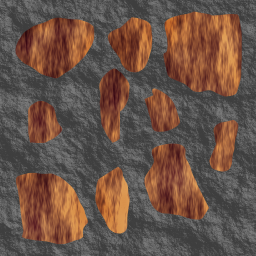

Indeed, a recent example of successful firing of thrusters on Voyager 1 after 37 years of space operation 7 attests to our ability to overcome such significant challenges of spacecraft development 8, 9 as longevity, reliability, and operational readiness decades after launching. 6 Proponents of Mars colonization consider present space technology as nearing the stage when it will be able to provide the necessary level of reliability and efficiency required for the one way journey from Earth to Mars. These capabilities have been discussed in detail in several comprehensive review and opinion articles that describe various opportunities and challenges facing the Mars settlement program.

Intense efforts by the world's space agencies and more recently, private enterprises have brought us ever closer to having broad technical capabilities to transport a small number of colonizers and equipment to Mars. The image of Mars was captured by the Mars Global Surveyor in April of 1999. Pacific Standard Time on December 11, 1990, when it was at a distance of ≈2.1 million kilometers away from Earth during the first of two Earth flybys on its journey to Jupiter. The image of Earth was captured from the Galileo orbiter at about 6:10 a.m. These features of the Red Planet have firmly cemented its status as an ultimate space colonization destination for near future, 4 despite the obvious immediate challenges such as a dusty carbon dioxide‐rich atmosphere, the pressure of which is reaching only 0.09 atm.Ĭomposite image that shows the relative dimensions of Earth and Mars. 3 Although no one has seriously demonstrated a practical means for the extraction and refining of these resources into useful products on Mars, a distant possibility of doing so is considered a principal point in favor of colonization. 2 Furthermore, similar to Earth, Mars is expected to have substantial mineral resource at and under its surface layer, with a recently confirmed evidence of metal ores and other vital mineral substances. Moreover, promising results obtained by rovers and a low‐frequency radar installed on the Mars Express spacecraft have long sustained the belief that it might be possible to find undersurface and subglacial liquid water. With a mean radius of 0.53 of that of Earth, i.e., a surface area nearly equal to the total area of dry land on our planet, and 0.38 of Earth's surface gravity ( Figure 1), Mars is thought to provide a potentially much more benevolent environment for the colonists from Earth compared to any other proximate planet. Mars, however, is a horse of a different color.

Other neighboring planets, such as hot Venus and gas giants Jupiter and Saturn, are no more suitable for human habitation. Life on the Moon base would not differ from that in the lifeless desert, with no hope of ever finding water. 1 Indeed, the Moon, while very close, is small, barren and devoid of atmosphere. Beyond an active target for space exploration, colonization of Mars has become a popular topic nowadays, fuelled by a potentially naive and somewhat questionable belief that this planet could at some point in time be terraformed to sustain human life.

Mars: Among other potential outposts, the Red Planet has always been shrouded by a veil of romanticism and mystery.


 0 kommentar(er)
0 kommentar(er)
